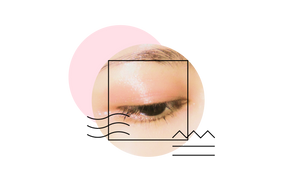Warning: Some gory and mildly disturbing details will follow
It’s 3:00 am right now and I thankfully got out of the facebook watch trap of a never-ending stream of related videos. Tonight was probably 2 hours of extremely ripe pimples being popped. I just couldn’t look away… squeeze.. Ooze.. squeeze.. Ooze.. There is something primal about removing something that doesn’t belong in our body. I compare it to watching a suspense film where there is an exposition, leading to a climax (unfortunately this time it is an explosion of hard greyish scrambled egg followed by gooey custard-like-pus with streaks of blood) and ending with a denouement of cyst sac extraction.
Ooooof what a thrill. Now let me remove my contact lenses befo…. Is that a pimple? Ah fuck it is. I shouldn’t pick. I shouldn’t pick. I know better than this. Lemme touch it to make sure it is a pimple. Hmmm I think it is.. (After 2 minutes of prodding it) Oh wait, see!!! It is now inflamed. I was right! It is a pimple.. But is it ripe? I think so lemme gently squeeze it with cotton buds. Not enough force, but I think I can see white pus. Okay fine let me get my extraction set, clindamycin solution, alcohol, and level serum. Let’s do this..
1 hour later I have several skinless penny-sized holes with bloody cotton pads in the wake of a 4 am pimple-popping battle. I wouldn’t be surprised if I need a blood transfusion with all the blood I lost as I clean up the mess. My whole face is inflamed, super angry, as I sit there drowning in regret but all is lost, I have to suffer the consequences of acne scars for the next few days. Thank goodness I have the Level serum to apply 4x a day to prevent more inflammation and marks.
To atone for my sins, I write this to warn others of the perils of squeezing pimples. Let’s do a round-up of the events in the skin, we can all understand the damage.
T=0
Acne formation is a manifestation of an exaggerated response of our immune system. The pus you see is a graveyard of white blood cells, dead bacteria, dead skin cells and other debris. There is some inflammation but it is localized. Usually, macrophages line up the area to contain the breach.
Our dead skin cells need a way for them to communicate even after they are dead. They are very smart so they rig their bodies with pro-inflammatory bombs called cytokines (specifically Interleukin-1). Any shear force that is applied to the skin, these cytokines get released. So does that mean that any movement or touching that I do will release these cytokines? So we shouldn’t move our face then? Of course not. Luckily, our skin also has a built in anti-inflammatory process that counteracts the pro-inflammatory cycle. In a normal state, our skin is in an equilibrium state of pro-inflammatory versus anti-inflammatory molecules.
T=1 second
The moment we squeeze our skin, we also squeeze out all the pre-formed cytokines in that area. The bad news is that when these cytokines explode, they detonate nearby dead cells that are also rigged with cytokines. You end up with an explosion of pro-inflammatory molecules that would overwhelm our innate anti-inflammatory system. Now we’re screwed, we just activated the inflammation cycle.
T=10 minutes
The site is red, throbbing and swollen. Your capillaries dilate so that your immune cells can easily access the site. Your skin is preparing the battlefield for the arrival of the SWAT team (white blood cells).
T=1 hour
The SWAT team arrives, they’re a bit overzealous so their go-to method is to Kamikaze themselves on the site of inflammation. They keep doing this until the enemy is eliminated. What we end up with is a pile of white blood cells that we love to see ooze out of pimples. Next time you see a pimple popping video, you’re looking at a mass grave of dead WBCs.
Unfortunately, while that battle is happening in that spot, your WBCs release a bunch of free radicals, myeloperoxidases, elastase, lactoferrin which they use to kill the bacteria or other pathogen. These molecules also escape to nearby areas and destroy normal protein, DNA, and underlying dermal matrix.
Alongside all these molecules released by WBCs are Matrix Metalloproteinases (MMPs). These enzymes are responsible for degrading and restructuring your dermal collagen. Normally these enzymes are needed for wound healing and skin restructuring as damaged collagen needs to be dissolved before Fibroblasts can restructure it. In cases where your skin gets chronically damaged, the secretion of MMPs is also exaggerated. This leads to the formation of abnormal scarring and wrinkles.
To add to the insult, the inflammation also leads to increased melanin production. As much as we hate spots, melanin is actually a protective molecule that our cells produce to protect itself from further damage. If you keep exposing your skin cells to damage, they become more and more sensitive, meaning, it gets easier and easier to trigger melanin production. The more you pick, the more pigmented it will become later.
As if that’s not enough, the DNA damage that you accrue through inflammation leads to the formation of senescent cells. Normally when cells get damaged, they have a self-regulating process of apoptosis (programmed cell death). Cells do love killing themselves don’t they. Instead of allowing themselves to become cancerous due to the damage they sustained, they just commit suicide. This is the same concept as sunburn. Your skin is peeling not because it got cooked, but rather because your cells deemed that there is too much DNA damage and they need to commit suicide.
Now here’s the problem, sometimes even before cells reach the threshold for DNA damage-induced apoptosis, mutations occur in the apoptotic signalling pathway. Because of those mutations, they lose their ability to undergo normal apoptotic processes and they consequently become zombie cells. Zombie cells (more appropriately called Senescent cells) are partially dead cells that keep secreting MMPs, cytokines and a bunch of other damaging molecules that contribute to the degradation of your dermal layers.
That’s a lot to process but as long as we don’t have the ability to fully remove those senescent cells, the next best thing is to prevent their occurrence. Every bit helps so start with not picking.


